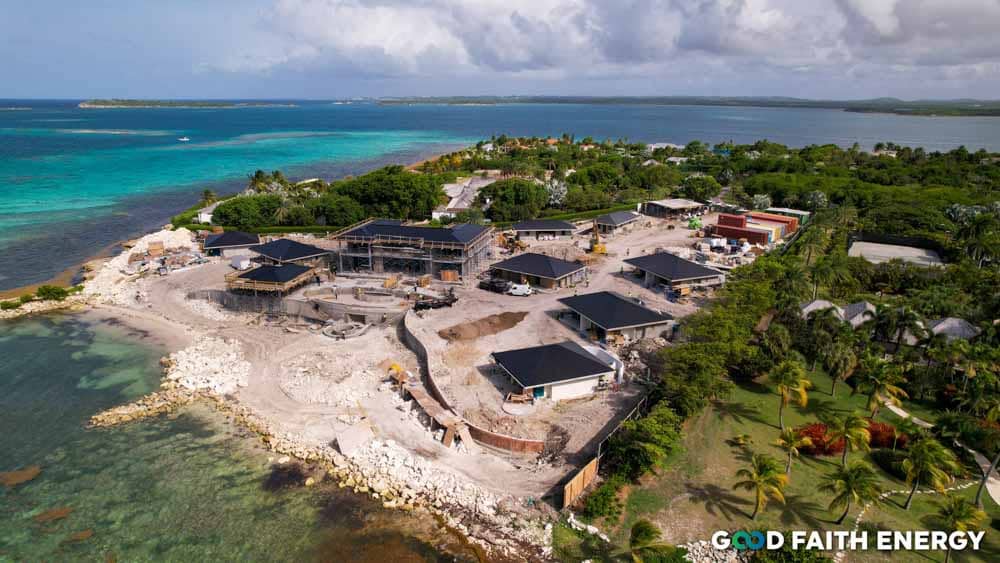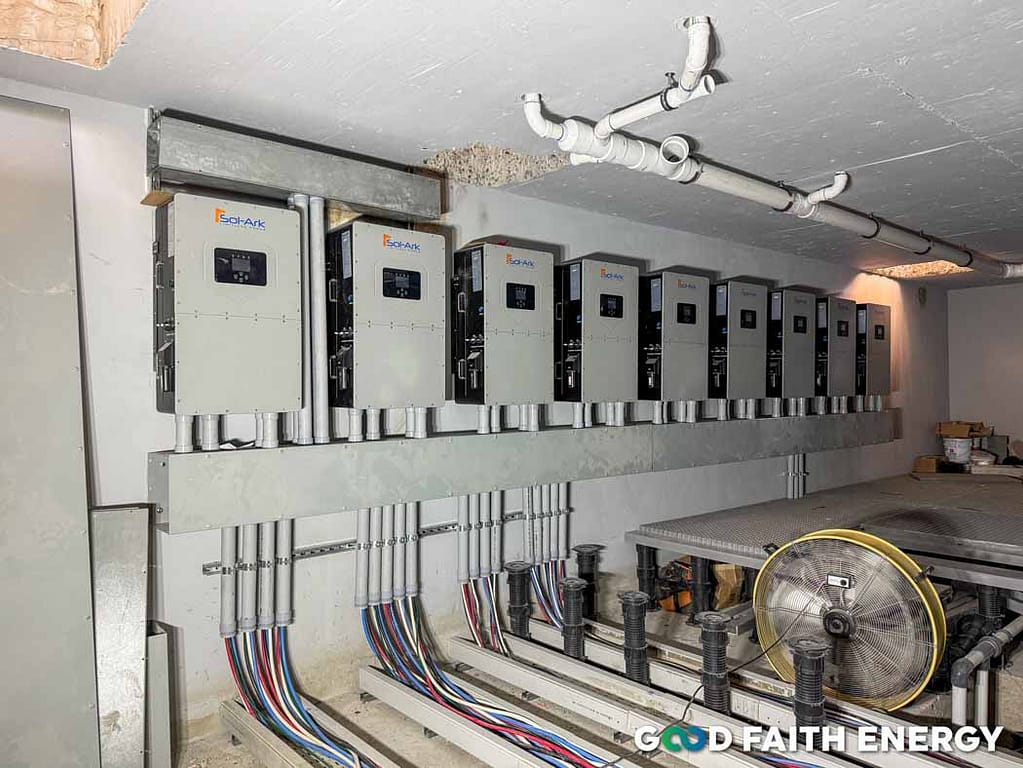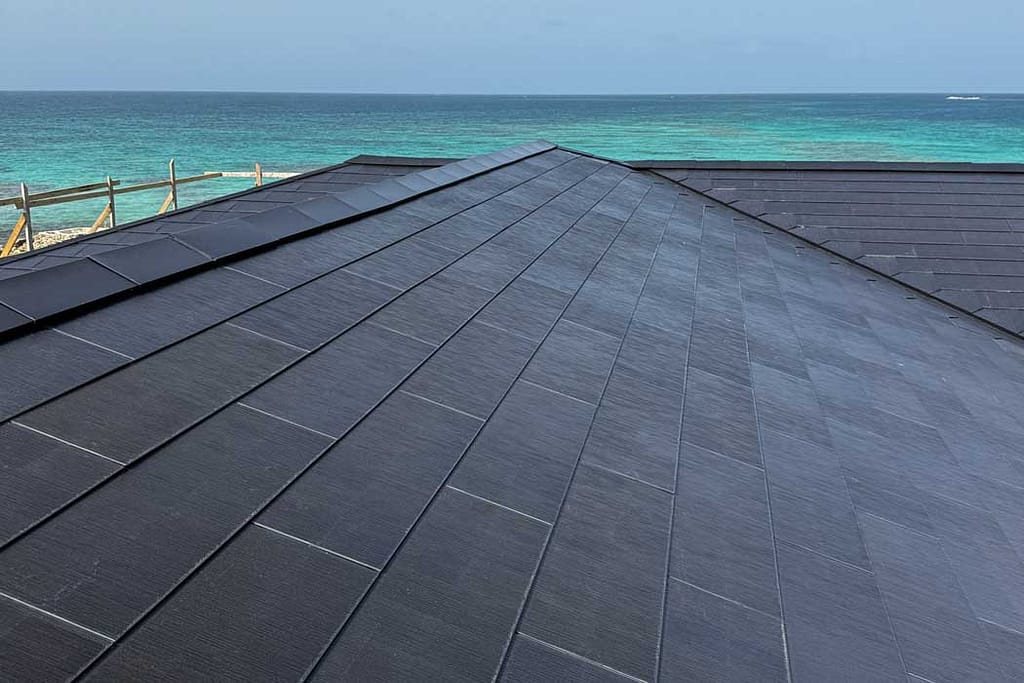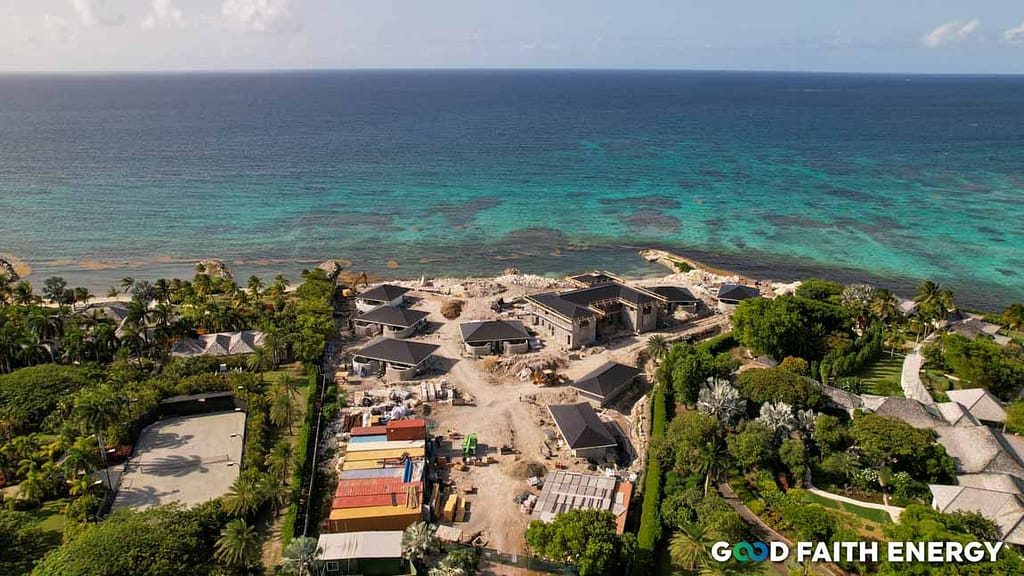Tropical climates demand solar panels that can handle intense heat, high humidity, salty air, and severe storms. The best solar panels for these conditions are durable, efficient, and resistant to corrosion and wind damage. Options like the Tesla Solar Roof stand out for their performance and longevity. In this post, we’ll explore what makes a solar panel ideal for tropical environments—so you can choose with confidence.
Table of contents
A Real-World Test in the Tropics: Jumby Bay, Antigua

Tropical climates present a unique challenge—and opportunity—for solar energy. High temperatures, intense sun, salty air, hurricanes, and remote infrastructure all push solar systems to their limits.
So what works best in these conditions?
Let’s dive into a real-world example that answers the question better than any lab test: Jumby Bay Island.
Good Faith Energy recently completed the largest solar + battery project in the Caribbean on this exclusive island paradise.
We installed a massive 233.28 kW Tesla Solar Roof, paired with:
- 9 Tesla inverters
- 9 Sol-Ark 30KW Inverters
- 9 40kWh Sol-Ark L3-HV indoor battery banks
Why Tesla Solar Roof? Because it’s built for beauty, but more importantly—built to last.
This system now powers the high-end villa 100% off-grid, handling heat, humidity, and storms with ease.
Why Tesla Solar Roof Works in the Tropics
1. Durability in Harsh Environments

The Caribbean brings heat, salt spray, and hurricane winds. Tesla Solar Roof tiles are tempered glass, Class F wind-rated, and engineered for severe weather.
2. All-in-One System
Everything, from panels to batteries, is integrated and tested to work seamlessly. The batteries and inverters are both manufactured by Sol-Ark and we paired them with the Tesla Solar Roof to ensure a fully weatherproofed system.
3. Battery Backup Built In
With power outages common in tropical regions, Tesla Powerwall and Sol-Ark storage solutions provide critical backup. In this project, 72 battery modules ensure energy flows even when the grid doesn’t.
4. Elegant Design for Premium Properties
Island homes demand aesthetics as much as performance. Tesla Solar Roof blends in, rather than standing out—perfect for luxury settings.

What Makes a Solar Panel Great for Tropical Climates?
While Tesla Solar Roof worked best for this project, here are general features to look for:
- High temperature coefficient (lower is better)
- Corrosion-resistant materials
- Wind and impact certifications
- Integrated storage options
- Proven warranty from a reputable brand
Brands like Tesla often lead the way in tropical installations.
The Caribbean’s Energy Challenge—and Opportunity

Tropical islands often suffer from:
- Weak, unreliable grids
- High electricity costs
- Limited fuel delivery during storms
Solar + battery systems offer not just savings, but energy independence.
Good Faith Energy is helping lead the way across the region:
🇧🇸 Bahamas
🇻🇮 Virgin Islands
🇧🇿 Belize
🇹🇨 Turks and Caicos
Ready to Build in the Tropics?
Whether you’re a homeowner, developer, or island utility company, Good Faith Energy has the experience, equipment, and expertise to deliver world-class solar solutions in remote tropical locations.
This isn’t just about panels. It’s about resilience, independence, and sustainability.
When considering energy solutions for hot, humid, and storm-prone regions, the question isn’t if solar works—it’s what are the best solar panels for tropical climate? As demonstrated by our groundbreaking installation on Jumby Bay Island, the Tesla Solar Roof offers unmatched durability, efficiency, and elegance in extreme environments. With integrated battery storage and hurricane-resistant design, it’s a top choice for those seeking true energy independence in the tropics.
🎥 Want to see the Jumby Bay project come to life?
Subscribe to our YouTube channel — full video dropping soon.
In the meantime, check out our video about installing solar and storage in Belize!